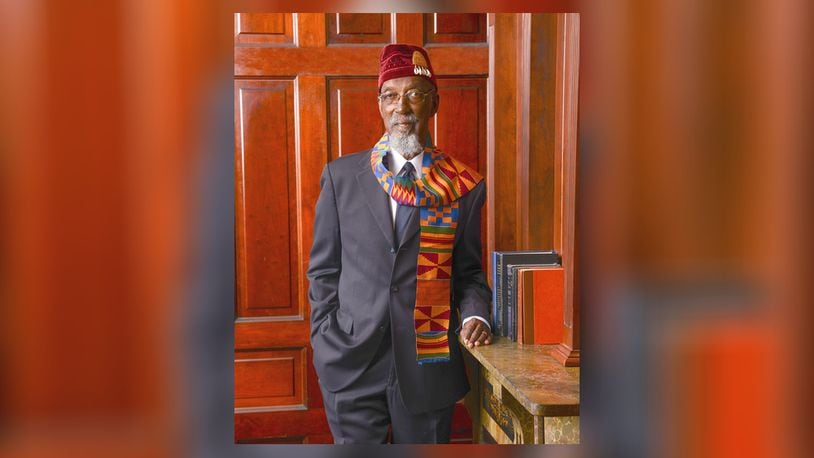“Bing Davis has a national and international reputation, and is a cherished member of the Dayton community,” said Kathy Webb, dean of University Libraries. “His work illustrates how art can be used to bring people together to affect change.”
The archive builds on Davis’ long relationship with UD, including as artist-in-residence, honorary Doctor of Fine Arts recipient and exhibitor.
“I’m excited UD has pledged support and structure to present the information in a form that students, researchers and scholars can have access to it to be able to see my journey and understand what I was attempting to do with art and culture in my life,” said Davis. “I hope they find a way to continue to inspire and inform students, scholars and the community. I’m really pleased about this.”
Davis was one of the first in the region to create African and African American art history courses, which he taught at UD, DePauw University, Miami University, Central State University and other institutions. He also helped establish many influential art organizations, including Genesis III, the African American Visual Artists Guild, and the National Conference of Artists, an organization that works to develop African American and African culture internationally.
Davis is particularly grateful for UD’s willingness to not only partner with DePauw, where he received his undergraduate degree, but Central State University and Wilberforce University.
“The archive will be anchored at UD but they have made a commitment to reach out,” he explained. “UD knew DePauw wanted to be involved and help and they also have every intention to reach out to HBCUs (Historically Black Colleges and Universities). UD will be looking at ways to share the knowledge and information as broadly as possible and certainly make everything available to those doing research.”
In addition, his studio on West Third Street in Dayton includes the Shango Center for the Study of African American Art and Culture, which offers workshops, seminars and scholarly research, as well as the EbonNia Gallery, a center for making and exhibiting art and celebrating African American events.
“Bing and his wife, Audrey, are dear friends of UD, and we are honored to keep Bing’s papers in the city where he spent most of his life and make them accessible to all who wish to understand or follow in his footsteps,” said UD President Eric F. Spina. “Creating opportunities for our students and others to engage diverse voices and legacies like Bing’s is integral to our mission as a Catholic and Marianist university that strives for true inclusion.”
Davis looks forward to his work being carried forward to educate the next generation.
“This is so unbelievable,” he said. “It’s something you don’t think about or visualize when you’re growing up, living your life and working your art. I never dreamed of something like this so when the opportunity presented itself it was awe-inspiring. I’m humbled by the fact that UD will showcase my involvement and contribution through art and culture to our Miami Valley area and the nation.”
About the Author
